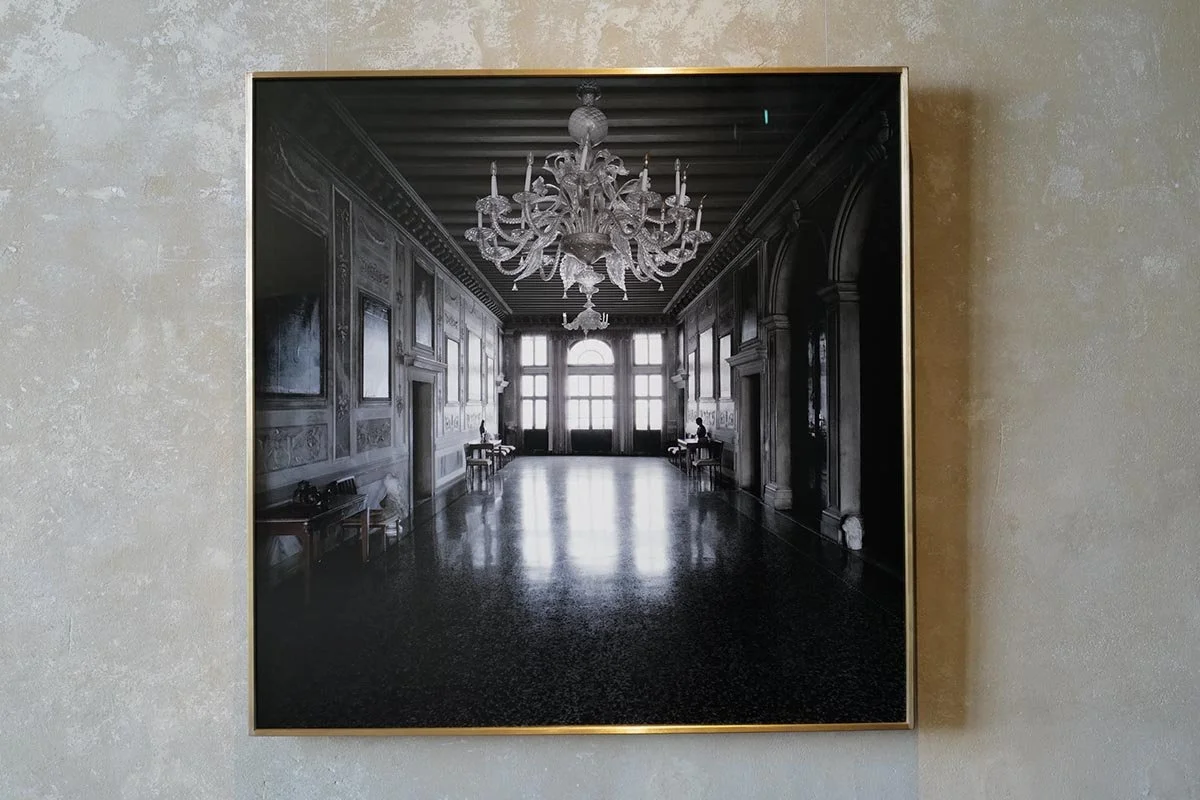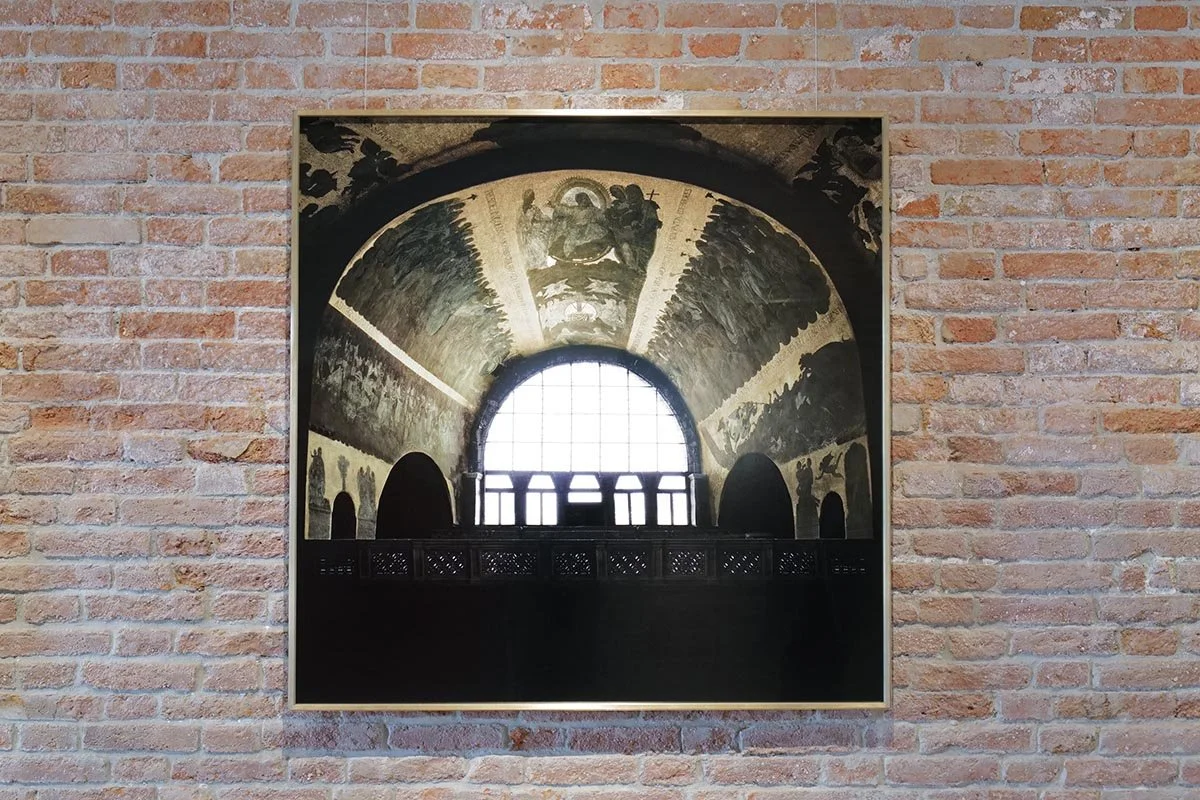Controfacciata - by Matthias Schaller - Casa dei Tre Oci - Venice
The Casa dei Tre Oci—now home to the Berggruen Institute Europe in Venice—takes its name from the three large windows that open onto its façade: round “eyes” looking out over the Giudecca Canal. These iconic openings not only earned the building its name but continue to define its character to this day. It is therefore especially meaningful that Controfacciata, a solo exhibition by photographer Matthias Schaller, opened here on April 5th.
This exhibition holds particular significance for me, as I had the privilege of witnessing the making of each individual frame at the artisan workshop of Paolo and Francesco Zanon, blacksmiths based in Cannaregio. Now well into their eighties but still actively working, the Zanon brothers—together with their father—were once the trusted blacksmiths of the great architect Carlo Scarpa. Scarpa’s masterful work can be admired at places such as the Querini Stampalia in Campo Santa Maria Formosa and the Olivetti showroom in St. Mark’s Square. The handcrafted frames for this exhibition stand as exceptional examples of traditional craftsmanship—an art form sadly fading in the age of automation, which too often strips objects of their soul.
Frame made in the artisan workshop of Paolo and Francesco Zanon in Venice
But back to the exhibition itself: Schaller presents a series of twenty-eight photographs taken in Venice, each capturing a distinctive architectural element known as the controfacciata—the portego, or central hall, found on the main floor of Venetian palaces. During the golden centuries of the Serenissima Republic, this space served as the economic and social heart of patrician palaces and merchant homes (case-fondaco). Thanks to its wide windows opening onto canals and narrow alleyways (calli), the portego was also a place flooded with natural light—a perfect setting for gatherings.
Intrigued by these in-between spaces, poised between inside and out, where shifting reflections glide across waxed floors, Schaller embarked on a true photographic investigation. Iconic buildings such as Palazzo Diedo, Donà dalle Rose, Malipiero, Ca’ Corner della Regina, and even the Basilica di San Marco appear in a sequence of carefully composed images within the rooms of the Casa dei Tre Oci. Each photograph is taken from the same perspective: a light-filled focal point surrounded by furniture, ceilings, and floors that fade gently into shadow.
This serial approach—almost obsessive in its precision—is a defining trait of Schaller’s work. His taxonomic method is deeply rooted in his German heritage, drawing clear influence from masters such as August Sander and the duo Bernd and Hilla Becher, who made visual cataloguing a hallmark of their practice.



